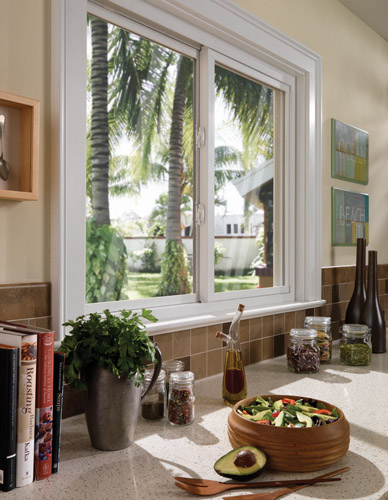Hardwood cabinets enhance universal design

|
A comfortable yet more accessible and barrier-free home are the desired aims of universal design. A term coined in the 1980s by architect Ron Mace, universal design is defined as "the design of products and environments to be usable by all people, to the greatest extent possible, without the need for adaptation or specialized design." For the now aging Baby Boomer generation, which comprises about one-third of the U.S. population, universal design is just what the doctor ordered.
American Hardwoods and Universal Design
Universal design makes homes practical and user-friendly, and whether remodeling or buying, as these active, older adults contemplate future health and mobility issues, they want to remain in their homes and continue to live independently. To satisfy their desire for a warm, beautiful space, incorporating American hardwoods into the homes makes them attractive and inviting places in which to live.
According to the American Hardwood Information Center, (www.HardwoodInfo.com), and Gil Thurm, executive vice president of the Hardwood Manufacturers Association, "when it comes to universal design, American hardwoods are the all-natural choice for sturdy, attractive and healthy design materials. The wide range of species -- oak, cherry, maple, and more -- provide a spectrum of colors and grain patterns to satisfy any decorating scheme."
Kitchens and Bath
Modern kitchens are much more than a place for food preparation. Now family gathering places, even centers to entertain guests, kitchens need to be comfortable, convenient and safe for everyone. Key to making a home barrier-free is the use of adjustable-height work areas and unique cabinetry. Wall-mounted cabinets, for example, leave floor spaces clear and easy to clean. Add an all-natural material like American hardwoods, and you have a healthy, beautiful kitchen as well.
Here are some design features to raise the level of convenience and usability for everyone:
* Varied-height cabinets and countertops will accommodate multi-cook families, so parent and child may prepare a meal together.
* Make components accessible whether standing or seated.
* Sliding drawers, rollout shelves and lazy Susans make items easier to reach.
* At the base of floor cabinets, keep the toe/kick space deep enough to accommodate wheelchairs.
* Lower cabinet doors and drawers will require reinforced hardware in case they are leaned on for support.
* D-shaped or lever-style handles and magnetic touch-and-release cabinet doors are perfect for hands of any size or strength.
* To allow full use of the cabinet door frame consider swing-away hinges.
* Under-the-counter refrigerator drawers and other flexible appliances make a kitchen more accessible for someone wheelchair bound.
Similar universal design ideas can be applied when remodeling a bathroom:
* Vary the height of vanities to lessen the need to crouch.
* Provide seated users adequate under-the-sink knee space.
* For additional storage, consider a cabinet on wheels, stored under the sink and movable.
Solid hardwood cabinets, vanities and flooring add a degree of elegance to the remodel. Don't worry about water damage. Today's water-resistant finishes form a watertight seal protecting the wood yet allowing it to expand and contract, normally.
Throughout the Home
Built-ins and wall-mounted cabinets provide open floor space to accommodate wheelchairs and walkers. Media room cabinets house and hide electrical components. Larger bedrooms often feature a breakfast bar containing cabinets for storage, a small refrigerator and countertop space for brewing coffee. Walk-in closets with built-in drawers, pull-out trays and multi-height hang bars help keep everything organized and easily accessible.
To add style to the mix, solid hardwood cabinets complement existing furniture and room decor and add a level of quality unmatched by other construction materials. With a host of species to choose from, major cabinet makers are embracing these ideas with special lines and features that blend the concepts to add function, comfort and beauty.
Healthy Materials
Hardwood floors are commonly found in universal design plans. Providing easy maneuverability for wheelchairs and mobile storage units, simple regular maintenance such as dust mopping, sweeping and vacuuming keep wood floors looking great.
American hardwoods are also non-toxic and do not trap allergens such as mold spores and dust, and are often recommended by doctors for individuals with allergies or asthma.
A Perfect Match
For those looking to add the functionality and comfort of universal design, a simple key word search, "universal home design," on any Internet search engine is a great place to begin. Then enjoy the best of both worlds by incorporating the timeless beauty and warmth of American hardwoods into your plan.
Learn more about solid American hardwood cabinetry, flooring, furniture and hardwood sustainability at the American Hardwood Information Center at www.HardwoodInfo.com.







